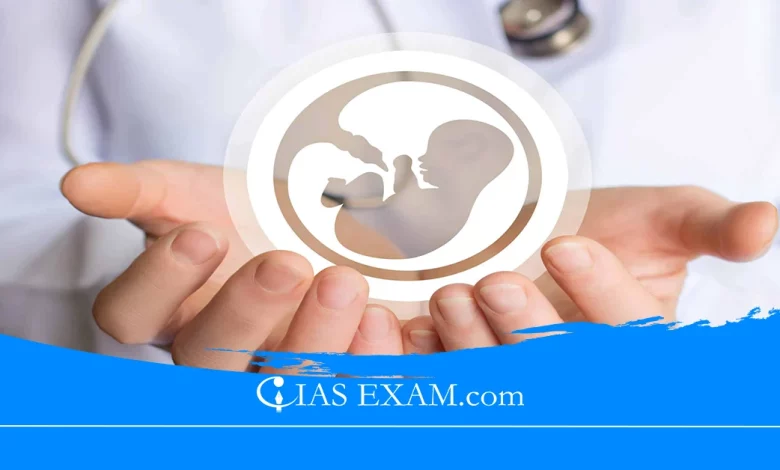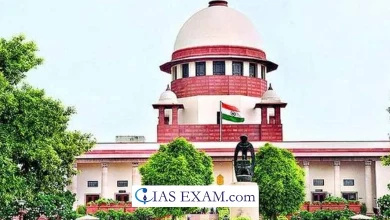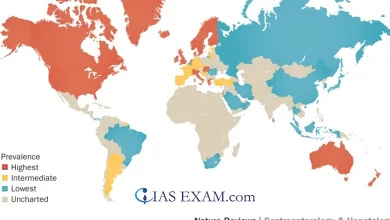
Context
Recently, a research paper from Lancet has mentioned about the drop in fertility rate in India.
Major Findings
- Drop in Fertility Rate: India’s fertility rate has dropped from nearly 6.2 in 1950 to just below 2 in 2021. It is projected to dip further to 1.29 in 2050 and 1.04 in 2100.
- Depleting Working Population: India’s total fertility rate (TFR) — the average number of children born per woman — is dipping irreversibly to at least 1.29, far lower than the replacement rate of 2.1.
- This means a hastily depleting working age population.
- Increase in Senior Citizens: By 2050, one in five Indians will be a senior citizen while there will be fewer younger people to take care of them.
Reasons for Decline in Fertility Rate in India
- Government Policy: Post-independence, there was a need to restrict the population. So the Family Welfare Programmes were supposed to convince people to have not more than two children.
- Decline in Infant Mortality: Due to diverse maternal and child health-associated programmes and a successful immunisation infant mortality declined in India extensively and small families have become the norm.
- Rise in Female Literacy: Due to the rise of female literacy and women’s participation in the workforce, career consciousness, financial returns and economic independence have increased in India which means that women are reconsidering their options of having a second child.
- Economic Factors: Economic factors along with rising living costs, the need for twin incomes to support households, and the preference for better requirements of residing have contributed to smaller family sizes.
Consequences
- Rise in Elderly Population: The effects of fertility decline will be that the proportion of the elderly in the population will boom sharply.
- By 2050 the share of senior citizens in India will be more than 20 percent, that is 1 in 5 people.
- Labor Force Decline: With fewer younger people coming into the workforce due to a declining fertility rate, this can impact economic growth and industries may face challenges in finding skilled workers.
- Healthcare Challenges: As the population ages, there is probably to be extended demand for healthcare services, this can stress healthcare systems and require changes in healthcare policies and infrastructure.
- Challenges for Social Security Systems: Declining fertility rates can pose challenges for social security systems, such as pensions and retirement funds.
Government Initiatives
- National Health Mission (NHM): It is aimed at strengthening healthcare systems, which include maternal and child health services.
- NHM gives critical healthcare services, such as antenatal care, postnatal care, family planning services, and infant immunization, which circuitously have an effect on fertility costs with the aid of promoting maternal and child health.
- Family Planning Program: India has a long-standing family planning programme aimed at promoting contraceptive use and reproductive health awareness.
- Pradhan Mantri Matru Vandana Yojana (PMMVY): Under the scheme economic assistance is provided to pregnant and lactating mothers for their first live delivery.
- The scheme targets to enhance maternal and child health outcomes and indirectly supports fertility by promoting safe motherhood.
Way Ahead
- The challenges are nevertheless some a long time away for India however the country needs to start performing now with a comprehensive approach for the future.
- Models from Scandinavian countries like Sweden and Denmark, which are dealing with these challenges by assisting new families may be replicated.
- They are presenting inexpensive childcare, investing in healthcare and taking on large-scale male-engagement initiatives to build gender equity.
- Distribution of Household chores: For women in order to manage careers with motherhood, it’d be vital for men to take greater responsibility for household and care work.
- Economic policies that stimulate growth and activity introduction, along with social security and pension reforms, will also be essential in adapting to and mitigating the impacts of declining fertility rates.
Source: The Economic Times
UPSC Mains Practice Question
Q.Critically examine the several economic and socio-cultural challenges in bringing down fertility rate in India. (250 words)





.png)



